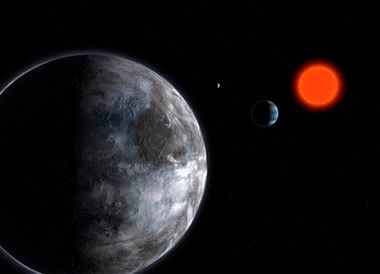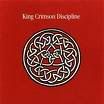
WASHINGTON -- For the first time astronomers have discovered a planet outside our solar system that is potentially habitable, with Earth-like temperatures, a find researchers described Tuesday as a big step in the search for "life in the universe."
The planet is just the right size, might have water in liquid form, and in galactic terms is relatively nearby at 120 trillion miles away. But the star it closely orbits, known as a "red dwarf," is much smaller, dimmer and cooler than our sun.
There's still a lot that is unknown about the new planet, which could be deemed inhospitable to life once more is known about it. And it's worth noting that scientists' requirements for habitability count Mars in that category: a size relatively similar to Earth's with temperatures that would permit liquid water. However, this is the first outside our solar system that meets those standards.
"It's a significant step on the way to finding possible life in the universe," said University of Geneva astronomer Michel Mayor, one of 11 European scientists on the team that found the planet. "It's a nice discovery. We still have a lot of questions."
The results of the discovery have not been published but have been submitted to the journal Astronomy and Astrophysics.
Alan Boss, who works at the Carnegie Institution of Washington where a U.S. team of astronomers competed in the hunt for an Earth-like planet, called it "a major milestone in this business."
The planet was discovered by the European Southern Observatory's telescope in La Silla, Chile, which has a special instrument that splits light to find wobbles in different wave lengths. Those wobbles can reveal the existence of other worlds.
What they revealed is a planet circling the red dwarf star, Gliese 581. Red dwarfs are low-energy, tiny stars that give off dim red light and last longer than stars like our sun. Until a few years ago, astronomers didn't consider these stars as possible hosts of planets that might sustain life.
The discovery of the new planet, named 581 c, is sure to fuel studies of planets circling similar dim stars. About 80 percent of the stars near Earth are red dwarfs.
The new planet is about five times heavier than Earth. Its discoverers aren't certain if it is rocky like Earth or if its a frozen ice ball with liquid water on the surface. If it is rocky like Earth, which is what the prevailing theory proposes, it has a diameter about 1 1/2 times bigger than our planet. If it is an iceball, as Mayor suggests, it would be even bigger.
Based on theory, 581 c should have an atmosphere, but what's in that atmosphere is still a mystery and if it's too thick that could make the planet's surface temperature too hot, Mayor said.
However, the research team believes the average temperature to be somewhere between 32 and 104 degrees and that set off celebrations among astronomers.
Until now, all 220 planets astronomers have found outside our solar system have had the "Goldilocks problem." They've been too hot, too cold or just plain too big and gaseous, like uninhabitable Jupiter.
The new planet seems just right — or at least that's what scientists think.
"This could be very important," said NASA astrobiology expert Chris McKay, who was not part of the discovery team. "It doesn't mean there is life, but it means it's an Earth-like planet in terms of potential habitability."
Eventually astronomers will rack up discoveries of dozens, maybe even hundreds of planets considered habitable, the astronomers said. But this one — simply called "c" by its discoverers when they talk among themselves — will go down in cosmic history as No. 1.
--------------
That's the old news.
The new news: LTS TRN 2's home has been discovered.
It's 581 c, of course. Sorry to out you LTS TRN 2. Don't blame me, blame the telescopes and the universal conspiracy.

